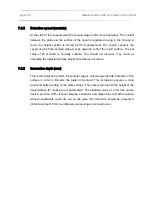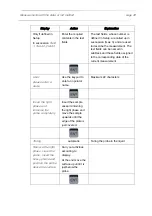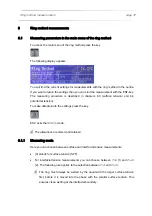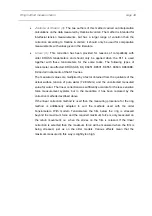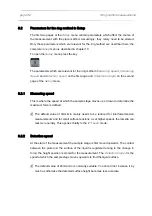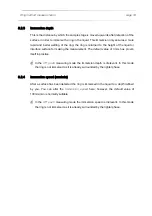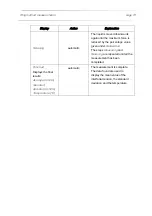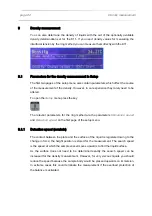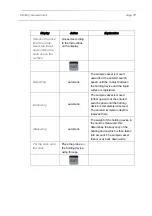
page 50
Ring method measurements
8.1.3
Reading limit
The result at the end of a measurement is an arithmetic average value calculated from
a certain number of single measurements. This is where you enter the
maximum
number of these single measurement values. Ten measurements are usually sufficient.
In case of higher variations this number can be increased.
*
The number of values that are
actually
recorded is ruled by the highest standard
deviation (
SD
). The measurements will be terminated when this standard deviation
has been achieved or undercut; the number of values recorded will never exceed
the
Reading limit
.
*
Under the main menu item
Settings
Æ
Number of values for SD
the number of
values to be used for calculating the standard deviation is set. When a
measurement is finished because the deviation conditions were matched, the
average value is calculated not from all values but from the values that were most
recently used for calculating the standard deviation.
8.1.4
Heavy density
For surface tension measurements the density of the liquid to be measured is entered
here; for interfacial tension the density of the heavy phase.
8.1.5
Light density
For surface tension measurements the density of the surrounding gas is entered here.
If the surface tension is measured in air then the value is 0.001g/ml; if you work under
a protective gas (e.g. argon) then the density of the gas must be entered.
For interfacial tension measurements the density of the light phase must be entered.
8.1.6
Relaxation / switching to the ring tear-off mode
Each measured value which is to be recorded in a measurement requires the
maximum force to be determined again. By entering a percentage value for
Relaxation
you are determining the percentage of the measured maximum force by
which the force acting on the ring is to be reduced before a further measurement is
made.
Summary of Contents for K11 MK3
Page 1: ...Tensiometer K11 MK3 User Manual V3 05 KR SS GmbH Hamburg 2000 2010...
Page 2: ......
Page 8: ......
Page 115: ......







